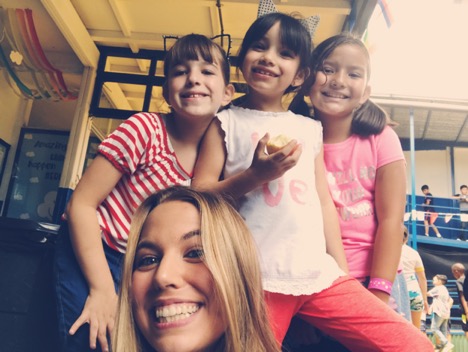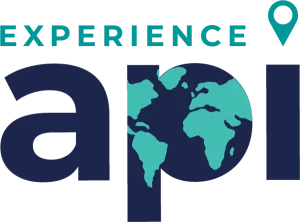If you aspire to be a teacher, professor, or group facilitator of any sort, teaching English abroad is a rich way to diversify your classroom experience and overall perspective. Want to learn about the classroom in a new cultural context? Look no further than API’s Teacher’s Assistant in Costa Rica program!
Lauren, a Boston College student, spent the month of June 2018 working in the classroom. She gained insight to the differences between private and public schools in Costa Rica as well as various differences in classroom compared to the United States. This is an excellent summer option for all who want to experience Costa Rica in a new way.

Lauren in Costa Rica with a few of her students
“As an education major at Boston College and paraprofessional in an extended year program in a New Jersey special education school, I have had my fair share of classroom experiences in the United States. In my first pre-practicum through my education program, I had the opportunity to partake in an academic language project with an English Language Learner (ELL) student from Egypt. I saw her become more comfortable in approaching obstacles with the language and found her enthusiasm for reading growing. Yet, it was also clear that the cultural piece of my teaching was essential, and brought both challenges and opportunities for better teaching. Going into my one month teaching experience at an elementary school in Costa Rica, I was holding on to one main question: How does culture impact one’s educational experience? Although I have not fully answered this question, being a teacher’s assistant in Costa Rica has opened my perspective on education in the United States and shown me how to foster a love for learning.
I was a teacher’s assistant in a private elementary school in San José, Costa Rica with a strong emphasis on bilingual education. Posters, bulletin boards, and quotes throughout the school were in English so it became clear that learning English was a key priority of this particular school. While speaking with my host sister, who attends public secondary school, she told me that it was pretty normal that students who go to private school commonly have better English and more English instruction. English, reading, and even science classes and examinations are done in English. Yet, there was a clear distinction among students who spoke very good English, possibly because parents at home had learned English, and students who were hesitant and shied away from using any English with me in the classroom. Yet, since my purpose was to improve the students’ English skills, I was strictly instructed not to speak Spanish with my students. However, in whatever way they could, students were eager to communicate with me, learn where I was from, and tell me about themselves.”

Lauren with one of her students in Costa Rica
In this program, teachers are housed with a local host family. In school, teachers are expected to speak English in order to teach students through immersion and to allow for students to adapt their ears to a native English accent. At home, teachers have the opportunity to practice or even learn Spanish with their host family.
“So, what’s a Costa Rican classroom like?” asked some of my friends and family members over the course of my trip. What a loaded question to answer in a short text message response! There are so many ways to describe the school day that I experienced on a daily basis. The day before I began teaching, our on-site supervisor informed us that school was different than the United States, mostly in the fact that it seems very unstructured coming from a very structured school day in the United States. Thinking back to my first day, the first word that comes to mind is chaos, and I mean that in the most endearing way possible. Throughout my experience, I learned to appreciate the fun brought to education in what first looked like this chaos. However, walking in with only suburban teaching experience from the United States obviously gave me a very limited view of what education looks like throughout the world. During my first day, the preschoolers were in an outside main plaza area of the school next to my classroom playing music and practicing for the talent show, and the music radiated through the classroom as my co-teacher was giving instructions for a workbook page. In their seats, students began dancing, clearly to a class favorite, smiling and waving their hands in the air.
“I couldn’t help but smile and laugh at the students who seemed so incredibly excited by the music and a quick break from their work…”

Lauren sharing a smile with a few of her students
…”and much to my surprise, it was not accompanied by a teacher’s scold, as it may have been in the U.S. Similarly, I walked into school one day to blasting music and students dancing and singing all over the place. At first glance, it was a lot to take in, but I thought to myself that every school day should start as fun and energetic as they do in Costa Rica. What first looked like chaos was a way in which students expressed their happiness and enjoyment of being together in a place where they felt loved, appreciated, and free to be who they are.
Keep in mind, I only experienced one school for one month in Costa Rica and obviously, I can’t generalize Costa Rican education. I can’t even generalize American education. There isn’t a singular right way to education. We might be quick to assert that United States education is better because of our higher standardized test scores or more detailed lesson plans, but our system might not be the norm in other parts of the world. What became clear in my experience, however, was that culture strongly influences schooling. Being a part of a culture of people whose motto is “pura vida” was very evident in the simplicity and happiness radiating from the school. A love for music and the arts embraced by the community was clear in my school as well. And for me, as a future U.S. educator, these are ideals that I want to pursue in my own classroom or school. Teaching in Costa Rica showed me firsthand that we can learn from other nations in how students are taught, embrace a global education, as well as learning from different cultures, communities, and perspectives.”
Teaching abroad is an excellent way to get to know a new language, culture, and way of life. This program is a great option for all those who want to get their feet wet and try their hand at teaching English!
The TA in Costa Rica Program has a 1 month minimum requirement. Applicants must be 18 years old or older to apply! Although classroom experience can be helpful upon arrival, prior teaching experience is not required.
Interested in learning more about this program? Check out further information about the application process, program price, and frequently asked questions on the website here. To begin the application process, submit your application here!




